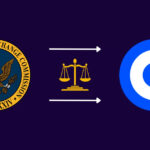We’ve said all along, “If your business depends on a platform, you’re not a business.” That principle means, “If your right to free speech depends on a platform, you don’t have free speech.” And now we see that the Biden Administration’s efforts to pressure social media companies to crack down on “misinformation,” even if it is later proven to be true, such as the authenticity of Hunter Biden’s laptop, are proceeding smoothly without incident.
In a Kafkaesque decision, the Supreme Court ruled 6-3 that the plaintiffs in Murthy v. Missouri, who had largely prevailed in lower court decisions, did not have standing to sue. The full ruling is posted at the end of this article, and includes a dissenting opinion by Samuel Alito.
Oddly, there has been relatively little reaction in the Twittersphere to this loss for users and the general public. We hope Glenn Greenwald weighs in. There have been just a few pointed comments, such as:
Today is a sad day in America because the Supreme Court has ruled that the government can collude with big tech companies to censor free speech.
The First Amendment is now dead in the United States of America. pic.twitter.com/bvLWjfGwcw
— Tulsi Gabbard 🌺 (@TulsiGabbard) June 27, 2024
BREAKING: Jonathan Turley slams the Supreme Court’s decision allowing the Biden administration to restrict free speech, saying “the government is engaging in proxy censorship,” adding, “They’re making a mockery of the limits of the First Amendment.” Watch pic.twitter.com/BCBRHeaJ0j
— Simon Ateba (@simonateba) June 26, 2024
To be sure, the case has simply been remanded. The plaintiffs have the opportunity to amend their filings or file new filings with different plaintiffs to try to resolve the standing issue. But the logic of the decision sets a high bar.
Simply put, the Supreme Court found that the plaintiffs had not demonstrated a sufficiently specific proof of harm, since they presented both evidence of harm and conclusive evidence of perpetrators. The latter viewpoint runs counter to many past decisions that held that government censure can have a chilling effect, and that alone is enough to support a First Amendment challenge. Here, the plaintiffs had to prove that they could be subject to censorship not just in the past, but in the future. To anti-vaxxers, that seems intuitively plausible, but how do you prove it?
Here are the key points of the ruling on the filing of the lawsuit. To make it easier to understand, I will quote from the syllabus:
Neither the individual nor the state plaintiffs have established standing under Article 3 to seek injunctive relief against any of the defendants. Pages 8-29.
(a) Article 3’s “suit or controversy” requirement is “fundamental” to the “proper role” of the judiciary. Raines v. Byrd, 521 US 811, 818. A proper suit or controversy exists only if at least one plaintiff “establishes standing” (ibid.), meaning that the plaintiff has suffered or will suffer damages that are “specific, particular, actual or threatened, reasonably traceable to the conduct at issue, and remedied by a favorable judgment” (Clapper v. Amnesty Int’l USA, 568 US 398, 409). Here, although the plaintiffs’ theory of standing depends on the platform’s actions, the plaintiffs are not seeking to enjoin the platforms from restricting posts or accounts. Rather, they are seeking to prohibit government agencies and officials from pressuring or encouraging platforms to suppress protected speech in the future.
Two particular challenges arise from the forward-looking, prospective nature of the damages asserted by the plaintiffs. First, it is a fundamental principle that federal courts cannot remedy “damage resulting from the independent actions of third parties not before the court” (Simon v. Eastern Ky. Welfare Rights Organization, 426 US 26, 41–42). Second, because the plaintiffs are seeking prospective relief, they must face “a real and imminent threat of repeated injury” (O’Shea v. Littleton, 414 US 488, 496). Taken together, these requirements require the plaintiffs to show a substantial risk that in the near future at least one platform will restrict at least one plaintiff’s speech in response to the actions of at least one government defendant. Here, at the preliminary injunction level, the plaintiffs must show that they are likely to succeed in bearing that burden. Based on the record in this case, that is a tall order. Pages 8-10.
The crux of the matter from the judgment itself is as follows:
Here, the plaintiffs’ theory of standing relies on the platforms’ conduct, but the plaintiffs do not seek an injunction to enjoin the platforms from restricting posts or accounts.
I hate to say this, as writers like me have been greatly harmed by this ruling, but it seems to me that a case with compelling evidence (Twitter Files) was not properly conceptualized and argued.
The nature of the abuses are similar to shareholder lawsuits. Experts are welcome to correct me, but my impression is that First Amendment lawsuits are typically brought by publishers against the government, or by constituents whose right to speak in the so-called town square has been denied or unfairly restricted, where the claim is effectively that the government has coerced the platform into restricting the speech of various users.
Therefore, in my opinion as a lay lawyer, this case will have to be approached like a shareholder derivative action: shareholders step in to assert rights that the company should assert but has not asserted due to hopeless conflict or inaction. There is a certain standard called “futile claims” that the plaintiffs must meet. In layman’s terms, the plaintiffs must prove that their claims have failed (the posts were not restored and the de-amplification was not reversed) or that the claims are futile (the platforms are not going to resist the federal government for fear of various forms of retaliation; one needs to remember that the Twitter files contained not-so-thin threats).
Again, I am not an expert in this field. But the Section 230 immunity of Facebook, Twitter, et al. is based on a law that treats the platforms as passive conduits for user-contributed content, and thus exempt from liability for content based on the fiction that they are not publishers making editorial decisions. A reconceptualized application could put platforms in a dilemma: can they be the equivalent of mere message boards while engaging in extensive moderation and bowing to government pressure? Does their conduct exceed the legislative intent behind the immunity? There appears to be no evidence that their legal departments have written letters to the federal government questioning the First Amendment basis of institutional interference.
That said, as Matt Taibbi highlights in his article, the Supreme Court went far beyond what was necessary to dismiss the case under Article III by vindicating the administration’s claims that Hunter Biden’s laptop was a Russian plot and that the stories of significant vaccine harm were false information.
And Justice Alito’s dissent is very persuasive. Looking at just the case of one of the plaintiffs, Jill Hines, co-chair of Health Freedom Louisiana, Justice Alito argues that, contrary to the majority opinion, she fully meets the Article III standard for showing that she was harmed by a censorship campaign, that her posts were likely censored and moderated, and that the actions (in this case Facebook) were attributable to the Biden administration’s actions (he cites numerous statements by Biden administration officials and Facebook’s subservient responses). His dissent could therefore be a roadmap for refiling the case. But Justice Alito’s key point is that First Amendment rights need to reflect the current state of technology (which would provide a basis for a more critical look at how to apply the Article III test). This court is clearly unwilling to do so.
What was unusual about this case was that the Twitter files provided a wealth of factual material that would normally prevent an aggrieved party from proving their suspicions correct. Yet the proxy war via social media was seemingly successful in pinning the blame on everyone, giving the Supreme Court an easy evasion by pointing out that the plaintiffs did not target the social media platforms that were the direct culprits.
Taibbi concluded:
Mursi v. Missouri may not have been a perfect challenge to digital censorship, but I am surprised that the judges on the Fifth Circuit reacted to the evidence differently than the Supreme Court. The judges reacted like humans. They read the blistering denunciations of abuse directed at the platforms from the White House, and the flippant recommendations about how much this or that media personality should refrain from amplifying, expressed visceral disgust and indignation, and then calmly delivered a measured and limited ruling. The Supreme Court was clearly not the least bit surprised or perturbed by this behavior, and that is the problem.
Regardless of its partisan interpretation, the Supreme Court has tolerated assaults on the Bill of Rights since 9/11. In the meantime, these challenges have become more difficult as the national security establishment has become increasingly black boxed. But the plaintiffs and their lawyers deserve credit for attacking anyway, because words like “traceability,” “extrajudicial,” and “special factors” are all spy states can use to defend themselves.
There are several ways to reverse or mitigate this loss. One is to refile the lawsuit, as mentioned above. Another is against similarly situated plaintiffs. RFK Jr. wins preliminary injunction to censor anti-COVID vaccine speech.But that suit was stayed pending a ruling in that case. Given the impact that suppression of social media speech has had on both his anti-vaccination foundation and his presidential campaign, it’s hard to imagine that RFK Jr. would fail to meet the standard of showing past and imminent future harm. We haven’t had a chance to read his filing to see whether he had a clearer history of targeting platforms and fighting them over demotions and content removals than the Mursi group.
Another perspective is for states that disagree with the Supreme Court’s ruling to band together, draft model bills, and pass free speech laws. Intuitively, there should be no obstacle to creating protections beyond those of the First Amendment. Perhaps they could remedy the situation in which the Supreme Court refuses to clarify its position when social media platforms serve as weapons of official censorship.
Finally, if Trump wins, it will be interesting to see how the Trump administration closely mirrors the Biden administration’s approach and tramples on statements it doesn’t like. Will platforms suddenly discover the First Amendment when faced with pressure from officials with opposing ideological views? This ruling could become a hornet’s nest in the future.







